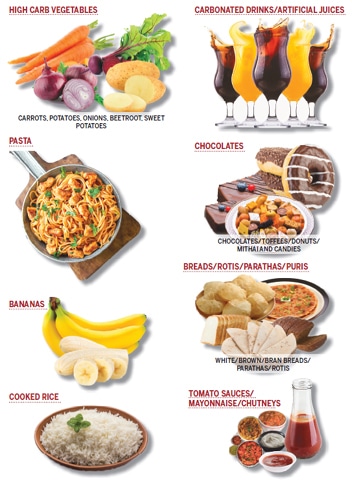My friend, Saher, had been dieting for a very long time; however, the results were not satisfactory. The pounds just wouldn’t shed and, what’s more, sometimes she felt she had gained a few. Then someone suggested she should start the keto diet. Within four months, she had shed 20 pounds and kept losing more. Within a year, we met a new Saher altogether.
Keto diet is the latest fad. It has reportedly helped many people lose weight, improving their overall outlook towards life. While on keto diet, our body produces most of its energy by burning fats instead of glucose (blood sugar) or carbs. “While on keto, one typically consumes food which is low in carbohydrates, high in fat and has moderate amounts of proteins,” she elaborates.
I didn’t quite understand how this low-carb, high-fat diet precisely works, so I asked Sana Azfar, a well-known nutritionist to explain the process. She started by giving me a comprehensive breakdown of how one’s body produces energy while on keto diet. “When you are on keto, you consume foods (in moderation) which have a high fat content, therefore, your body roughly derives 70 to 80 percent of calories from fats,” she explains. “About 10 to 15 percent of calories are extracted from proteins, while only five to 10 percent of calories are produced from carbohydrates.”
Here’s what you need to know about the high-fat, low-carb diet that everyone’s talking about
This energy breakdown baffled me, because we’re actually consuming more fats, and then we’re burning these fats to reduce weight.
Puzzled, I ask Azfar, “Does this mean one can eat cheese, chicken, beef and ice creams to reduce weight?”
“If you exercise daily and do not eat in excess amounts, then yes,” she answers, with a smile.
Foods you can eat on keto diet

Azfar further explains the concept of keto diet in detail, though her answer got a tad technical. “Keto is short for ‘ketogenic diet’,” she says. “The word ketogenic has been coined from ‘ketones’, the small molecules produced in the body while one is on a keto diet. When your body goes low on carbohydrates and glucose (after any physical activity or exercise), it uses glycogen or fat stored in the liver and converts them into ketones. These ketones provide your body the much-needed energy to function normally.
“On a ketogenic diet, the excess fats are being continuously consumed, that’s why you tend to lose weight.”
Consuming fats to reduce weight makes sense, however, another question popped up in my mind: why consume a high-fat, low-carb diet? Why not simply opt for a low-carb, moderate-protein diet and enable your body to consume the excess fat stored in the liver? After all, consuming a high-fat diet would be unhealthy and detrimental in the long-term.
Azfar understood my confusion with the high-fat diet. “You need to consume good fats (omega-3, omega-90) in order to start ‘ketosis’ in your body,” she explains. “Ketosis is a metabolic process which begins when your body starts producing ketones. Once your body reaches ketosis, which happens within a period of five to 10 days after starting the diet plan and establishing an exercise routine, it begins to consume excess fat stored in the liver. This is when you experience weight loss.”
Foods to avoid on keto diet

The purpose of keto diet is to keep your body continuously in the state of ketosis. But this will only happen when you consume less than 30 grams of carbohydrates per day. At this point, I was getting excited because the notion of getting to eat cheese, chicken/beef and ice creams while on a diet seemed very appealing.
“I know you must be thinking about the tempting food items I mentioned earlier,” says Azfar, reading my mind. “You can eat all of these foods in moderation on keto. For example, you can take eggs, cheese with some fruits, and black tea for breakfast, grilled chicken or beef (without buns or any type of breads/rotis) with salads for lunch, a few nuts with cheese in the evening, followed by a small scoop of sugar-free ice cream (if available) as an early dinner. Remember, you mustn’t include any white/bran/brown breads, rice, pasta, sugar, fruit juices, bananas, potatoes, legumes, beans lentils and pure dairy products like milk, curd, tea whiteners on a keto diet. Also exercise regularly and drink as much water as possible.”
My jaw dropped open on hearing the keto menu. While I would gladly tick some food items off my list, the menu seemed insufficient. One might be left feeling hungry and weak; after all, our bodies are used to enjoying lavish meals thrice a day. “This will happen on keto. Apart from untimely hunger pangs, you might feel lightheaded, tired, nauseous along with an upset stomach, diarrhoea and cramps for five to seven days,” she says. “This period is called ‘keto flu’, because your body will be adjusting to using different nutrients (fats and proteins) to derive energy from. Before this, carbohydrates were readily available as a quick source of energy.”
If you notice, we experience these symptoms in the first week of Ramazan (when we begin fasting). By the last week, since our bodies have adjusted well to the fasting schedule, most of these symptoms disappear. The same thing happens on a keto diet too. When we’ve had an early dinner (which is immediately after maghrib), our bodies are supposed to go into fasting mode, and that’s when ketosis is at peak.
After speaking to Azfar, I contacted Saher again to ask if she would recommend those wanting to lose weight to go on keto. “Keto did help me in losing weight, however after a while, I felt I wasn’t consuming healthy foods like legumes, lentils, beans and, most importantly, milk, which provide a variety of other nutrients (besides carbs) that are essential for us,” Saher says. “Similarly, consuming too many processed foods such as cheese and ice creams might cause a variety of health problems in the long-term. Therefore, I ‘ketoed’ for six months only, then I simply moved to the traditional ‘healthy eating and exercising’ model to lose weight.”
Saher’s recommendation resonates with Azfar’s thoughts about keto diet. “Even if this diet suits you, try not to make it a long-term routine,” she advises.
So how safe is ketogenic diet for you? According to studies, the biggest risk associated with the keto diet is the potential for ketoacidosis, which occurs when ketosis goes too far. When you are consuming fats, they’re broken down into fatty acids and ketones. An excess of ketones build up in your body, your blood becomes acidic. Severe ketoacidosis can lead to coma, or even death. Acidosis in general can trigger bad breath, headaches, dizziness, muscle cramps, and constipation.
Diets have always been a popular way to lose weight; however, if we eat healthy and in moderation and exercise regularly, we may not have to follow a particular regime. Also, it’s time to learn to accept and love ourselves the way we are. Think about it!
Published in Dawn, EOS, September 2nd, 2018















































Dear visitor, the comments section is undergoing an overhaul and will return soon.